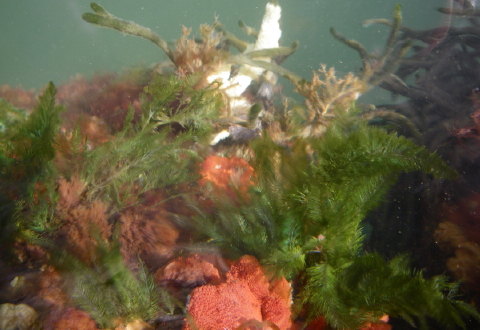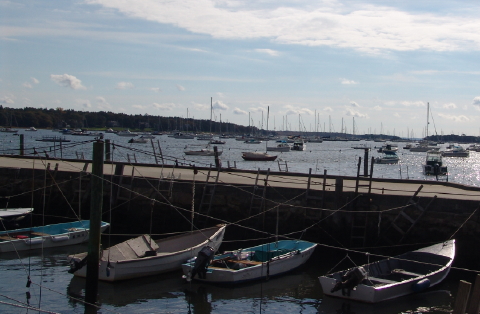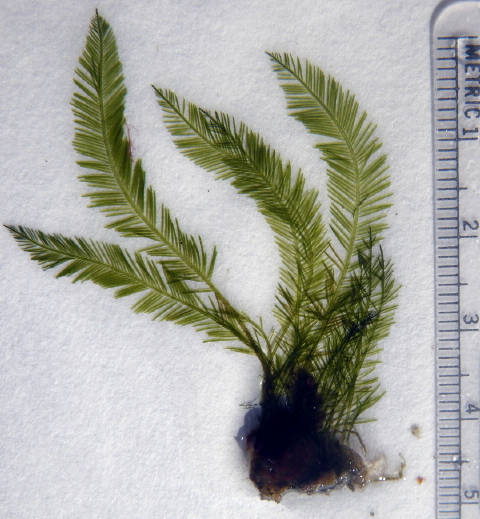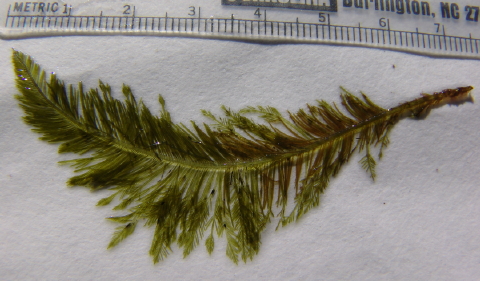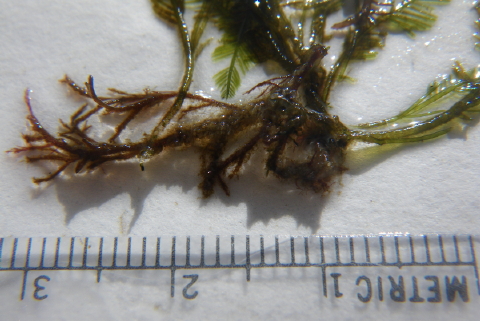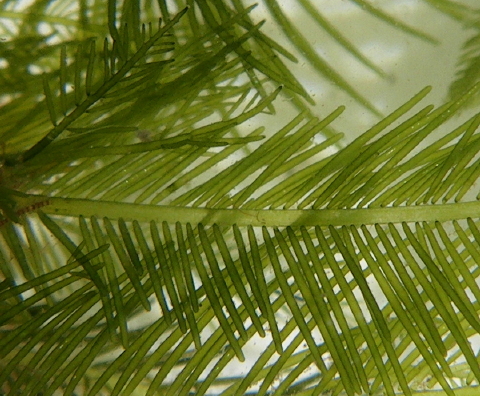Nuisance Green Algae (Bryopsis)
Turtle Journal regularly surveys the dock fouling flora and fauna in Sippican Harbor in search of new species and bio-invaders that may have moved into our local shoreline communities. We were surprised this week to discover a nuisance green algae flourishing along the floating docks at Marion’s Town Landing in Sippican Harbor between Tabor Academy and Burr Brothers marina. This lush green seaweed called Bryopsis comes in two-dimensional Christmas tree shaped (pinnate) fronds. What’s stunningly interesting about this species is that each two-to-six centimeter long “feather” is a singular unicellular organism!
Marion Town Landing in Sippican Harbor
Bryopsis sp. ranges in protected shallow waters from tropical to temperate climes. Frequently considered a nuisance species in the wild, Bryopsis was commonly used in aquariums and has been know to “escape” into the natural habitat and to overwhelm native species. Its unique unicellular organization, combined with an ability for both sexual and asexual propagation, allows for rapid evolution and adaptation. Species can change so rapidly that morphology (shape) alone cannot be used for identification. Scientists opt for DNA analysis to differentiate species.
Â
Bryopsis Proliferates along Sippican Docks
Many times each year, we stretch out on the floating docks along the west shore of Sippican Harbor to sample the fouling communities that have accumulated through the summer months. The extent of vibrant green colors congregating just below the waterline immediately caught our attention. Sue Wieber Nourse, who has been surveying and documenting Marion shoreline specimens for fifteen years, noted she had not seen this species in Sippican Harbor previously. Yet, Bryopsis had proliferated all along the waterline of the town’s floating docks. This nuisance green seaweed thrives in nutrient rich water containing elevated nitrogen levels, as has been reported in Sippican Harbor.
Bryopsis sp.
The specimen above illustrates the size and shape of the pinnate fronds, although the rhizoids of this organism are encased and hidden in a tunicate.  Bryopsis has been described as a beautiful feather-like siphonous green algae. The “stem of the feather” (central axis) is called the thallus with symetrical fronds on either side.Â
Single Cell “Feather” of Bryopsis
From the specimen above, you can see that the fronds are bipinnate. This “feather” represents one of the longer specimens we observed in Sippican Harbor at six to seven centimeters length. A factor that allows for proliferation of Bryopsis in the wild is the ability of this organism to produce a foul tasting and noxious protein that wards off predators. It generally out-competes other algae and seaweed for space, light and nutrients. Bryopsis is related to another nuisance green seaweed called Codium, which is a highly invasive species within the Massachusetts coastal community.
Bryopsis Rhizoids (Holdfast)
Examining Bryopsis from stem to stern, we reach the rhizoids (also know as its “Holdfast”) that anchors the algae to the dock and the fouling community.
Close-Up of Bryopsis
This close-up photograph of Bryopsis, which can be enlarged by clicking, illustrates the unicellular nature of the species and the lack of cell walls within the thallus (body). This unicellular aspect can become a vulnerability when the organism is injured and the cell wall is breached, yet Bryopsis sp. has evolved a way to heal itself when the membrane is punctured. Clotting agents (proteins) are released at the site of injury and within 15 – 20 minutes a healing, gelatinous envelope forms at site of injury.Â
Sippican Dock Fouling Community from October 2008
Taking a look back in time at the same fouling community and the same floating docks from two years ago, we can clearly see that no Bryopsis sp. was observed in our October 2008 survey. The source of this nuisance seaweed in Sippican Harbor can only be surmised. Bryopsis sp. has been known in coastal Massachusetts. Whether Sippican patches developed from an escaped local aquarium or lab, or whether they floated in with the tide is unknown and may never be known. Turtle Journal will, however, continue to sample the Sippican shoreline to determine the extent of its presence in the estuary.
